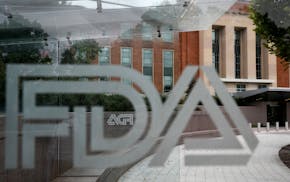The federal government has agreed to withdraw new rules that would require consumers in more than two dozen northern states to purchase high-efficiency furnaces beginning this spring.
The decision is the result of a legal settlement between the Department of Energy and the American Public Gas Association, which argued the new regulations would prove too costly for certain consumers and ultimately steer some of them to heat their homes with other, less-efficient fuels.
The parties last Friday asked the U.S. Appeals Court in the District of Columbia to vacate the new rule and restart the process of establishing new furnace efficiency standards.
The APGA, a group of public natural gas systems in 36 states, and utilities applauded the decision, which they said could have been burdensome for some consumers. Energy efficiency advocates said the government's retreat is a huge setback for efforts to pare energy use and reduce greenhouse gas emissions.
The furnace standards would have required new units installed after May 1 in 30 northern states to have efficiency ratings of 90 percent of greater. Current standards require at least 80 percent efficiency.
The rules were finalized in June 2011 and were scheduled to take effect in May.
The APGA argued in its lawsuit that the added costs of installing high-efficiency furnaces, which require additional venting and other modifications, could drive some consumers to switch to electric heat or kerosene.
The association also argued that the fast-tracked procedure used to establish the new standards was flawed. Under the settlement, which requires court approval, the Energy Department will use a more traditional rulemaking process to develop furnace standards -- one expected to take at least two years.
Most older furnaces are vented through a flue in the roof. Higher-efficiency furnaces require a sidewall vent that can be difficult to install in condos and other multifamily dwellings where space is limited, said Dave Harster, owner of Harster Heating & Air Conditioning in St. Louis.
"In some places, there's just no way to do it," he said.
Some two-story homes also pose problems because the second furnace is typically in the attic, and they produce condensate that can freeze in colder weather, Harster said.
In general, 90 percent efficient furnaces can cost $500 to $1,000 more than lower-efficiency units. And more-challenging installations can add hundreds more to the cost.

Senate passes bill forcing TikTok's parent company to sell or face ban, sends to Biden for signature
USPS commits to rerouting Reno-area mail despite bipartisan pushback and mail ballot concerns

